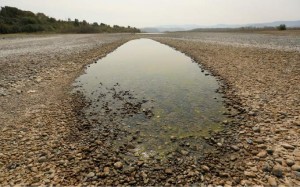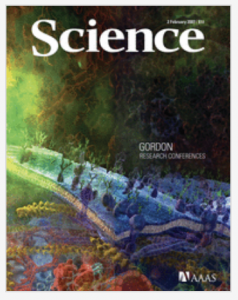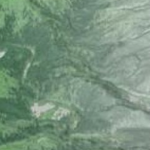Murder in the Muck: Scientists Search for Clues to a Killer in the Eel River
By Sabine Bergmann, Nov. 19, 2014. Cal Alumni Association California Magazine
Sabine reports on Keith Bouma-Gregson’s investigations of locations, toxicity, and environmental causes of cyanobacterial blooms in the Eel River that have starting around 2001, and have accounted for a number of documented dog deaths. In her article: “Blue-green algae, or cyanobacteria (so-named for their occasional cyan color), have been around for approximately 3.5 billion years” is incorrect–cyanobacteria seem to have proliferated starting ~2.4 billion years ago. read more…
Water-starved Eel River goes to ground near Fortuna
by Glenda Anderson, The Press Democrat, Sept. 14, 2014.
The main stem of the Eel River snakes northwesterly some 200 miles through canyons, forests and verdant farmland, gathering water from its many tributaries as it travels from its headwaters in the Mendocino National Forest to its terminus at the Pacific Ocean south of Humboldt Bay. read more…
Wired Californian forests to guide response to climate
09 June 2011 by Peter Aldhous, New Scientist Magazine issue 2816. SHAFTS of sunlight penetrate the canopy of Douglas firs as a creek gurgles in the valley below. It’s an idyllic scene, typical of northern California’s coastal hills. Then a data logger whirs into life, and the moment is broken. read more…
Long-term Study at Angelo Reserve Produces Surprising Results – an article on the Natural Reserve System website in February 2007 about the Science article “Species Interactions Reverse Grassland Responses to Climate Change,” written by Blake Suttle, Mary Power, and Meredith Thomsen.Also a Perspectives article in the same issue: Tackling Ecological Complexity in Climate Impact Research, comments on this research.
Life Leaves Subtle Signature on Lay of the Land – A report on Bill Dietrich’s work supported by NSF’s National Center for Earth-surface Dynamics as published Jan. 26, 2006, issue of the journal Nature.Also an Editor’s summary from Nature, this nice blog summary, and a Berkeley press release.
Untangling food webs ‘Ecologist Mary Power takes flight, she swoops down on the Angelo Coast Range Reserve in Mendocino County and careens up a narrow canyon, surveying each tree in her study site.’ In the Sept/Oct 2006 issue of the California magazine – a magazine for Cal alumni.
Date: 2006-02-23, Contact: Robert Sanders – For most people, it’s enough to know that when you turn on the tap, water comes out. But with the rapid pace of global warming, that may not always be the case. In an effort to understand the complete life cycle of water and, some day, to predict droughts, floods and water supplies, a team of geologists, biologists and chemists at University of California, Berkeley, is embarking on an ambitious project to track the fate of water through the atmosphere, the trees, the soil, the streams and oceans, and back again into the skies… read more.
Engineering meets Ecology – a report on the NCED project and their first Angelo field visit. On page 11 in the Spring 2004 issue of the Alumni Channel, a newsletter for St. Anthony Falls Laboratory.
Predators, Prey and Plants – a report on some of Blake Suttle’s Research by the Daily Californian in October 2003.




